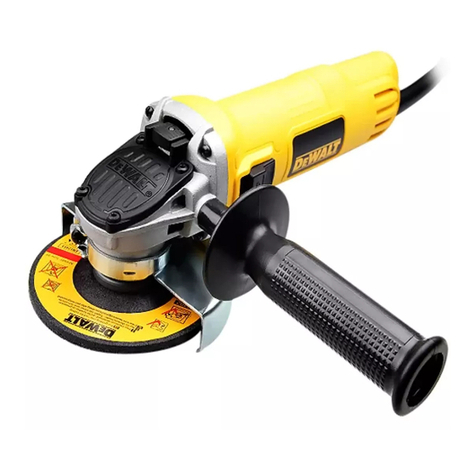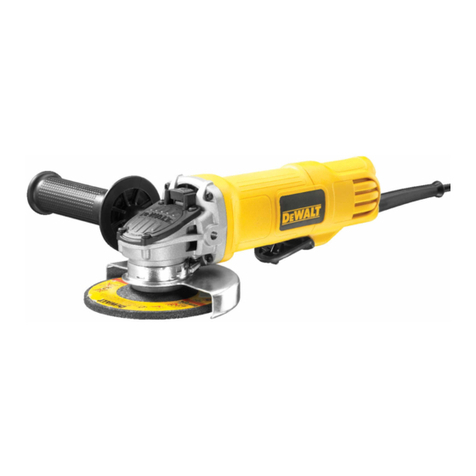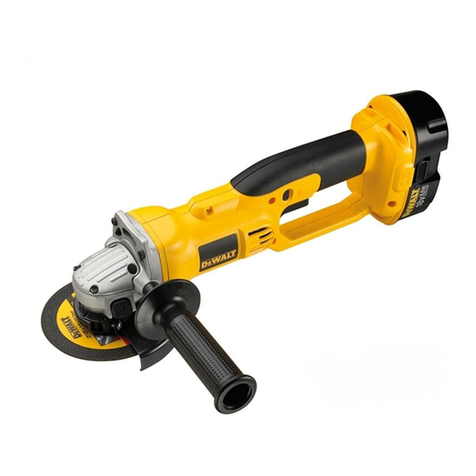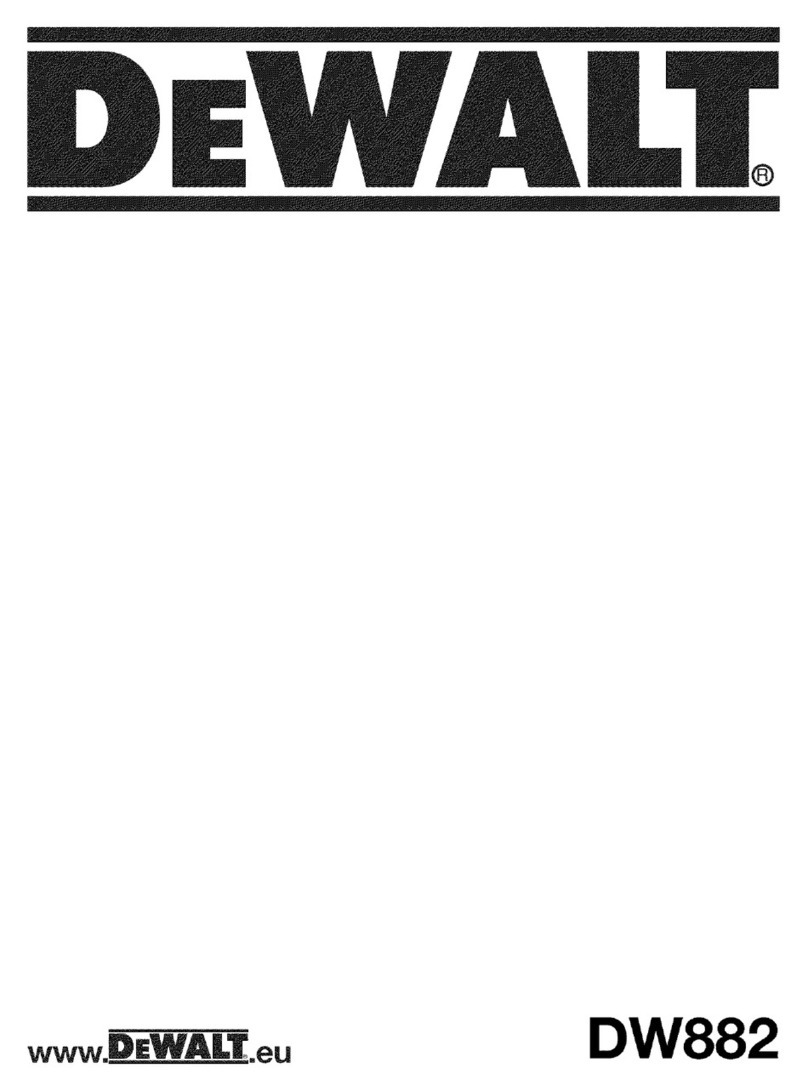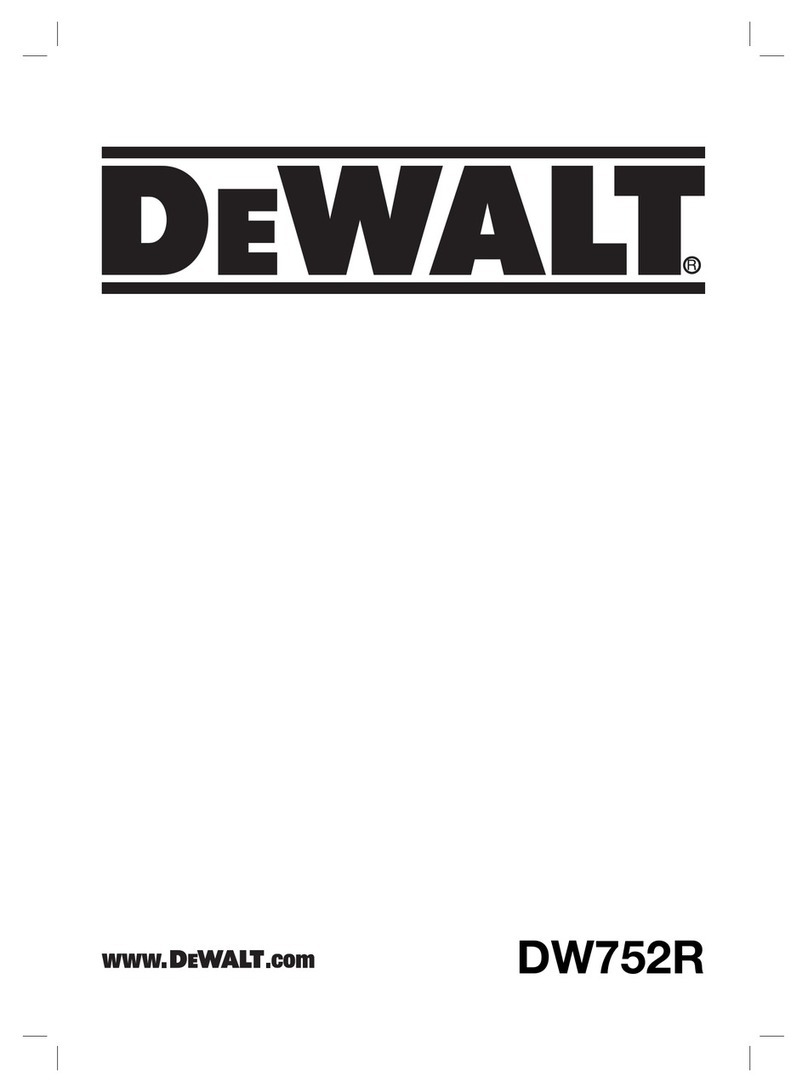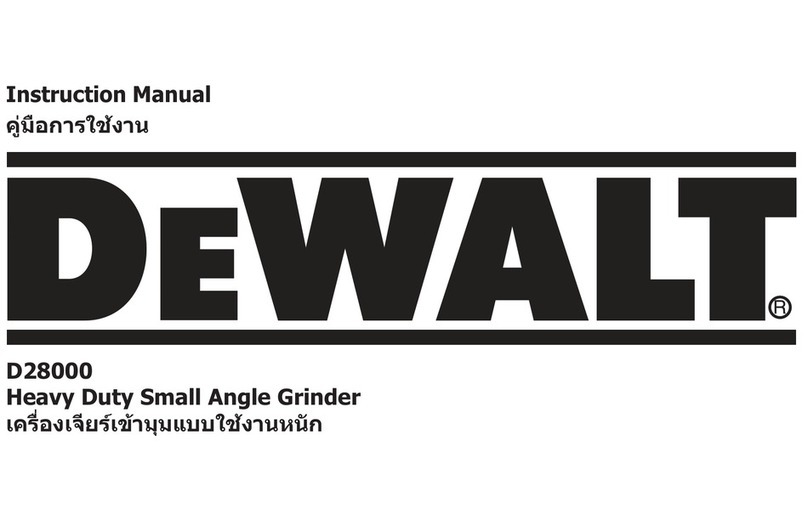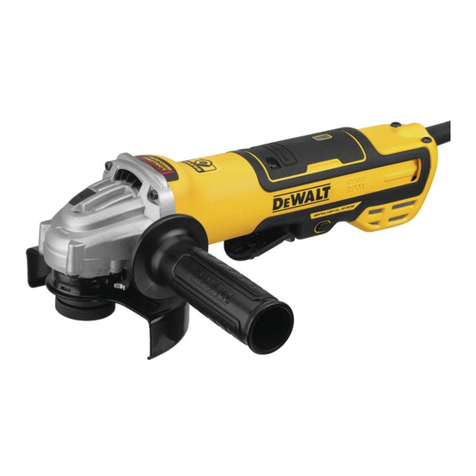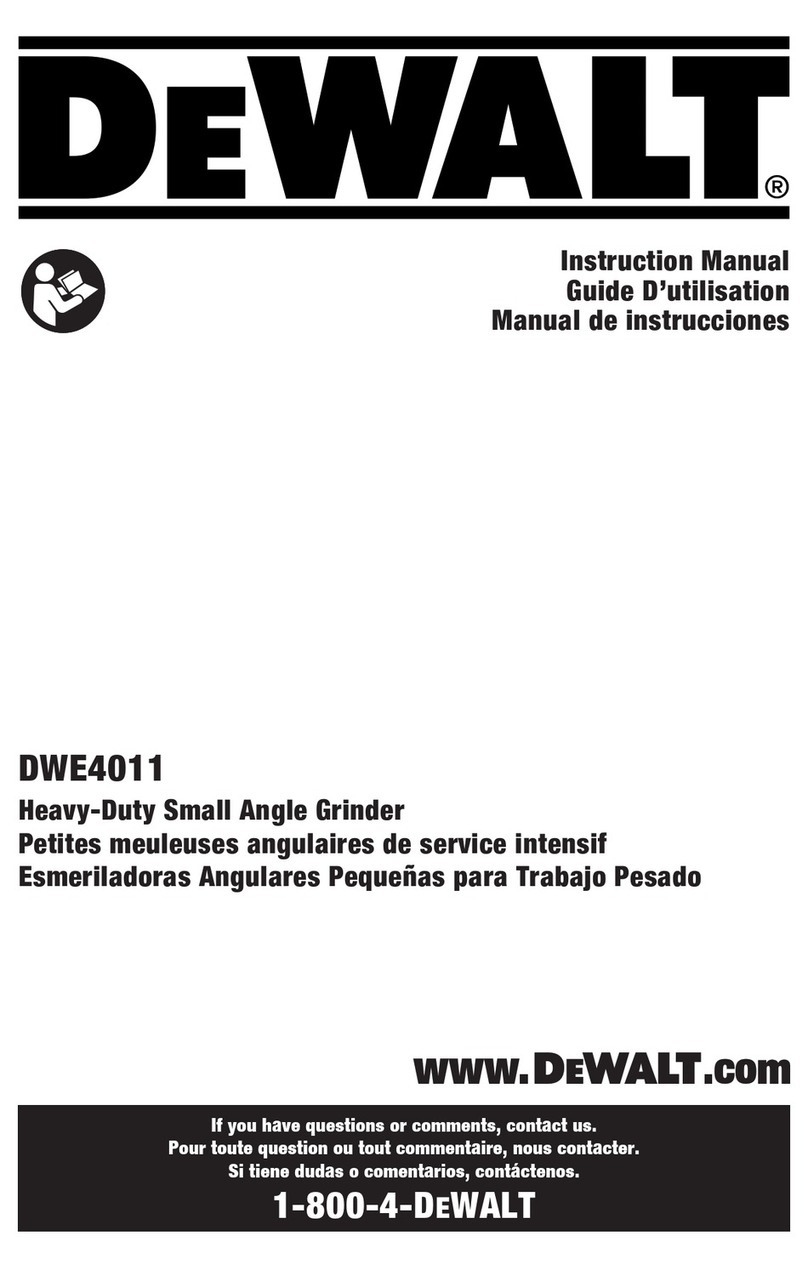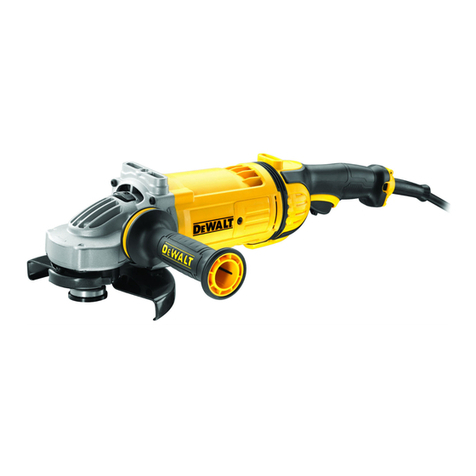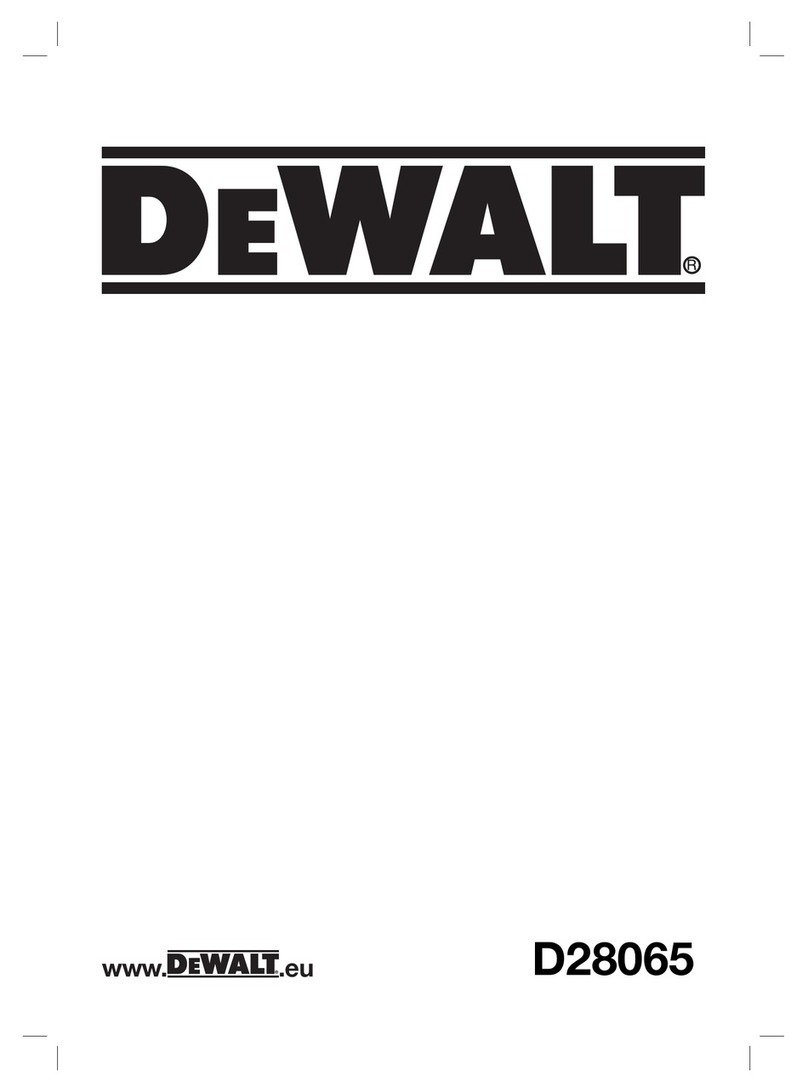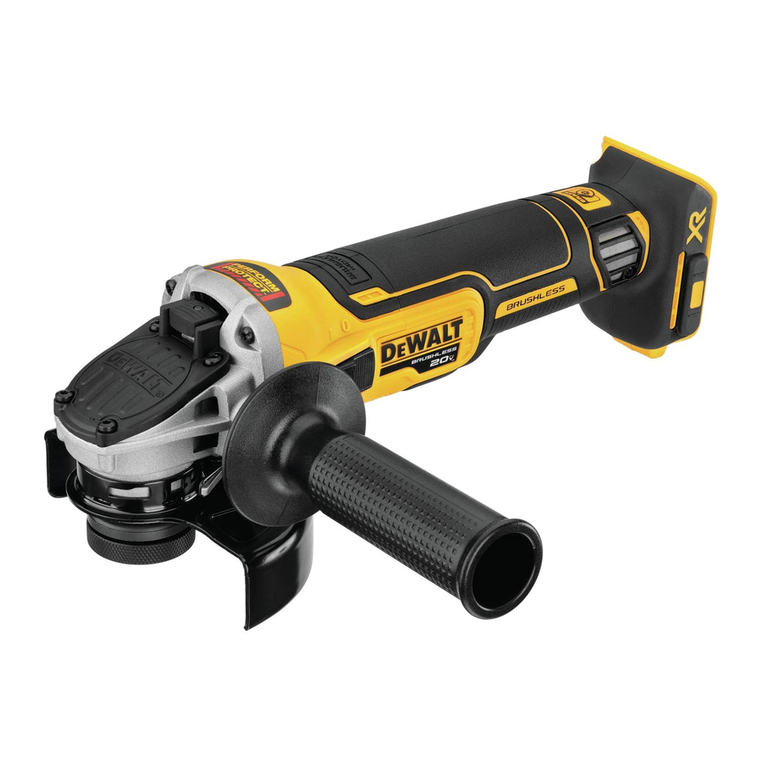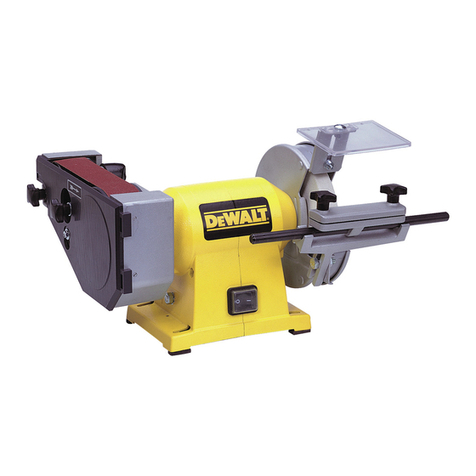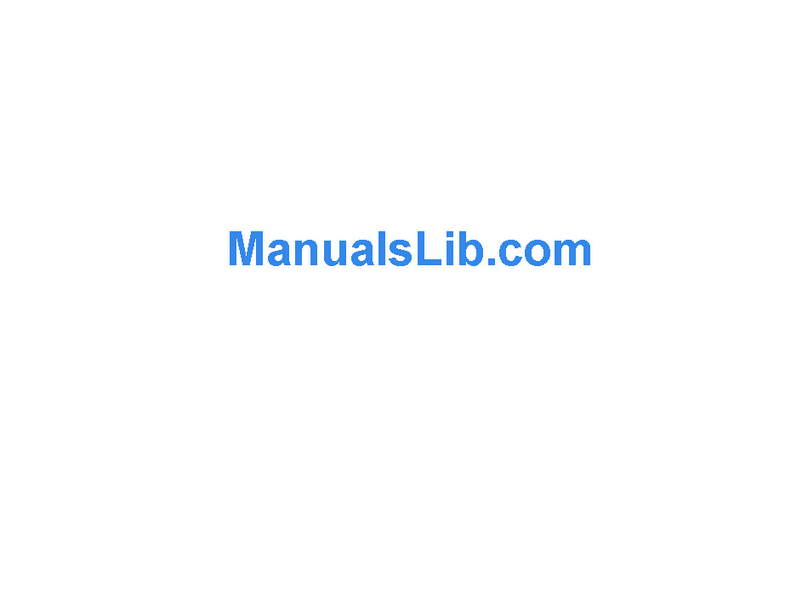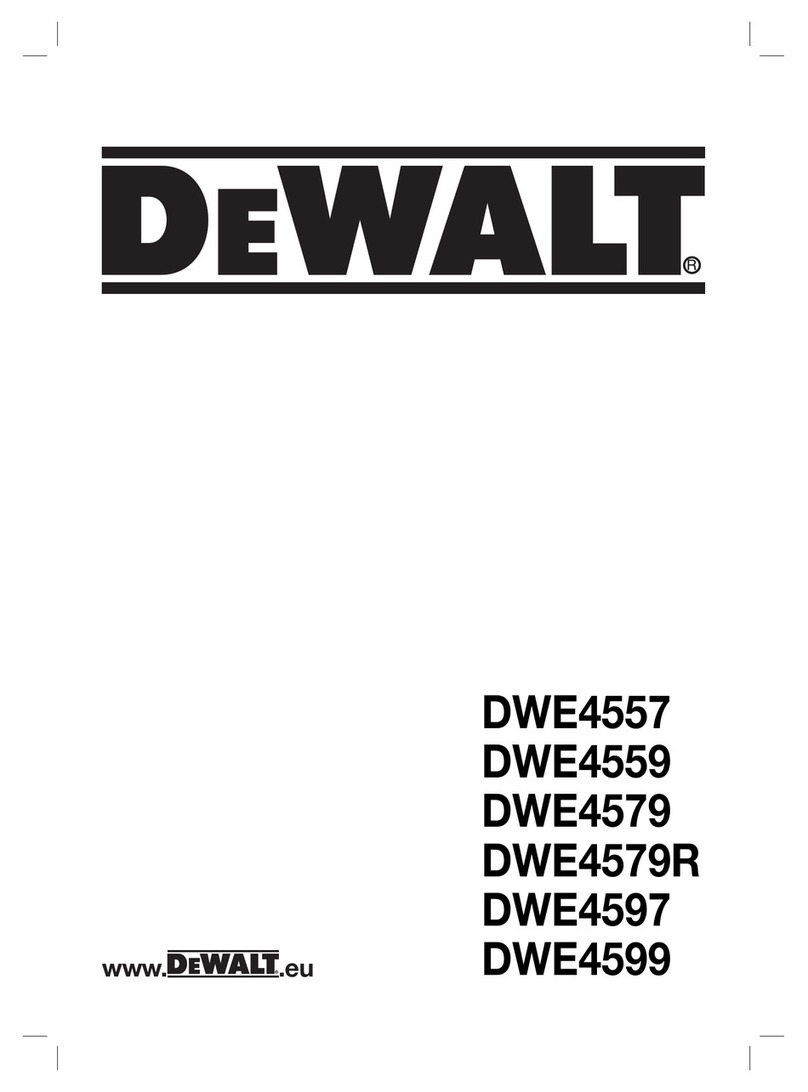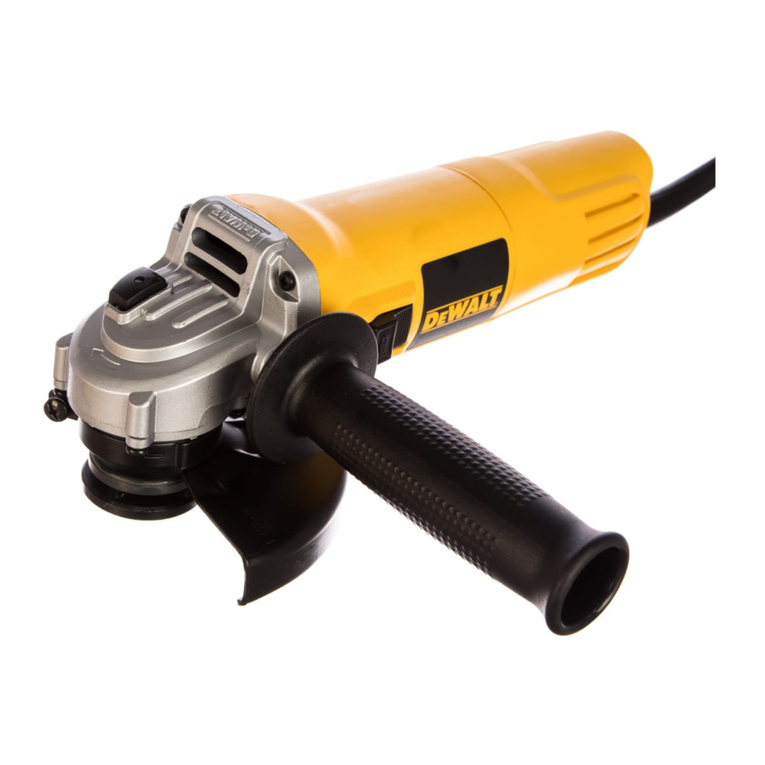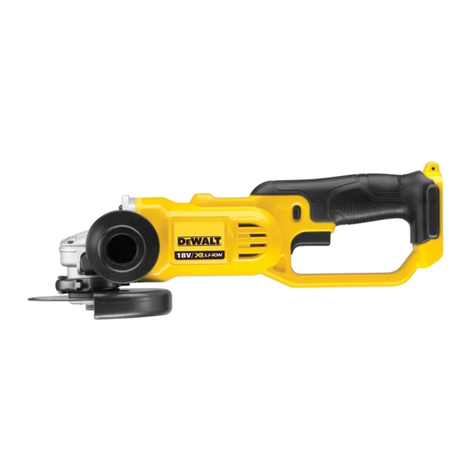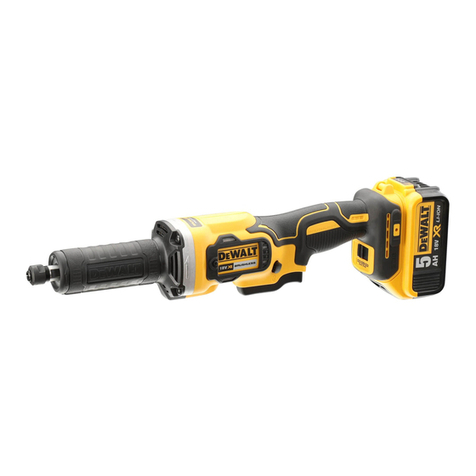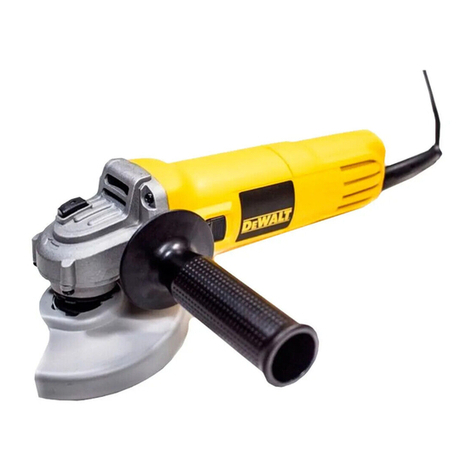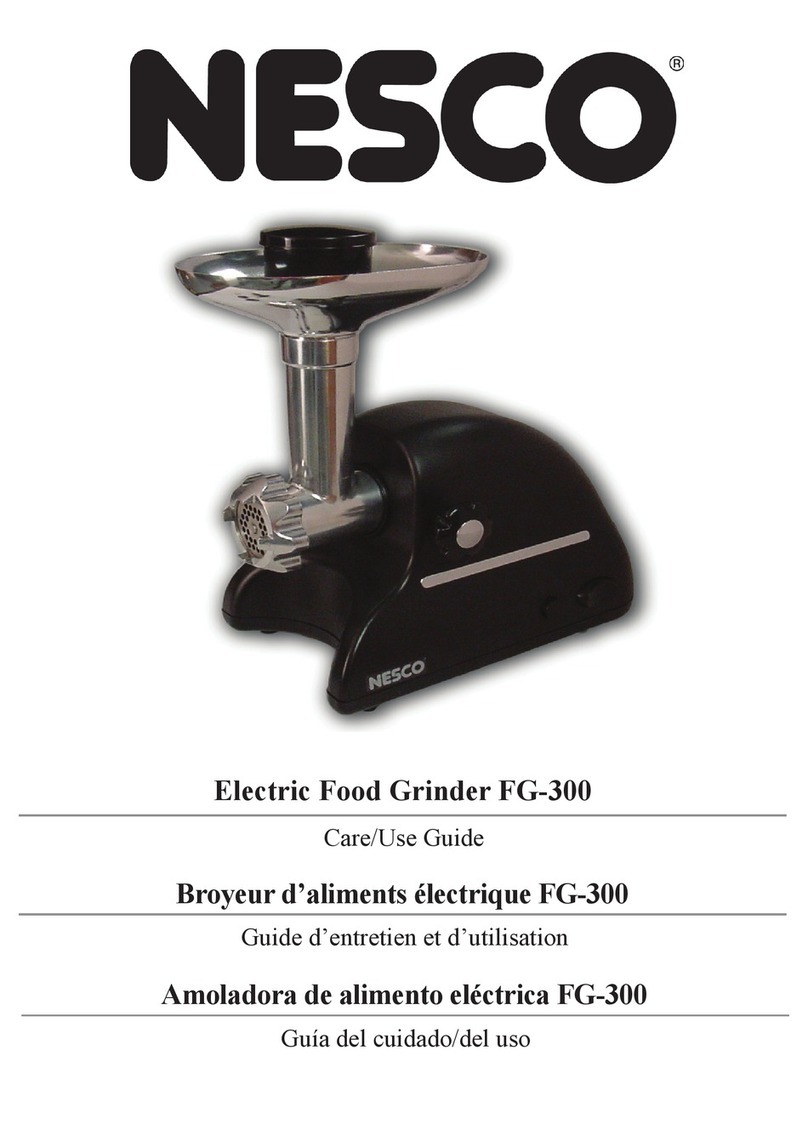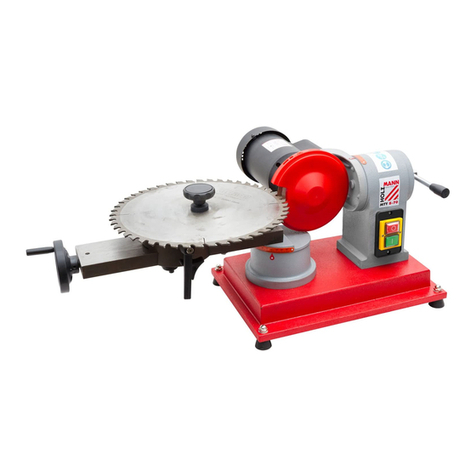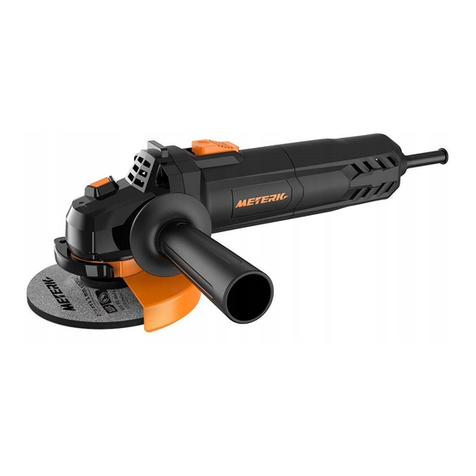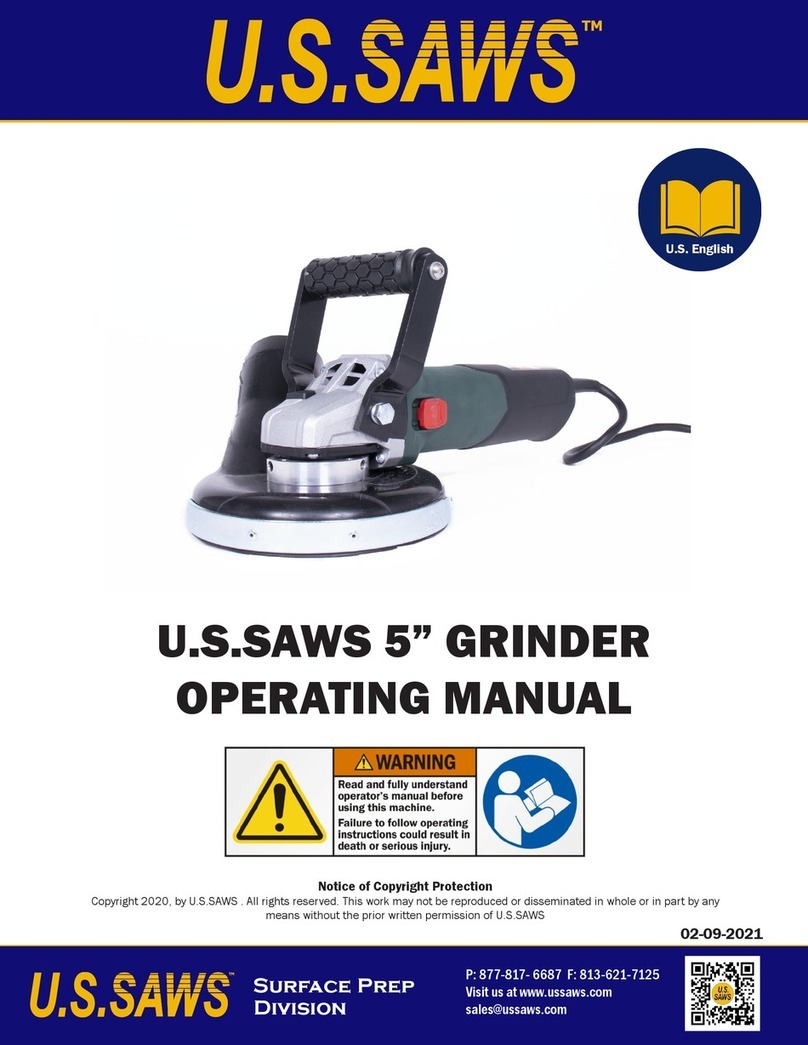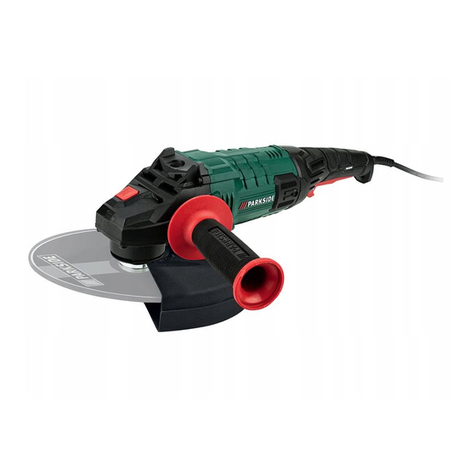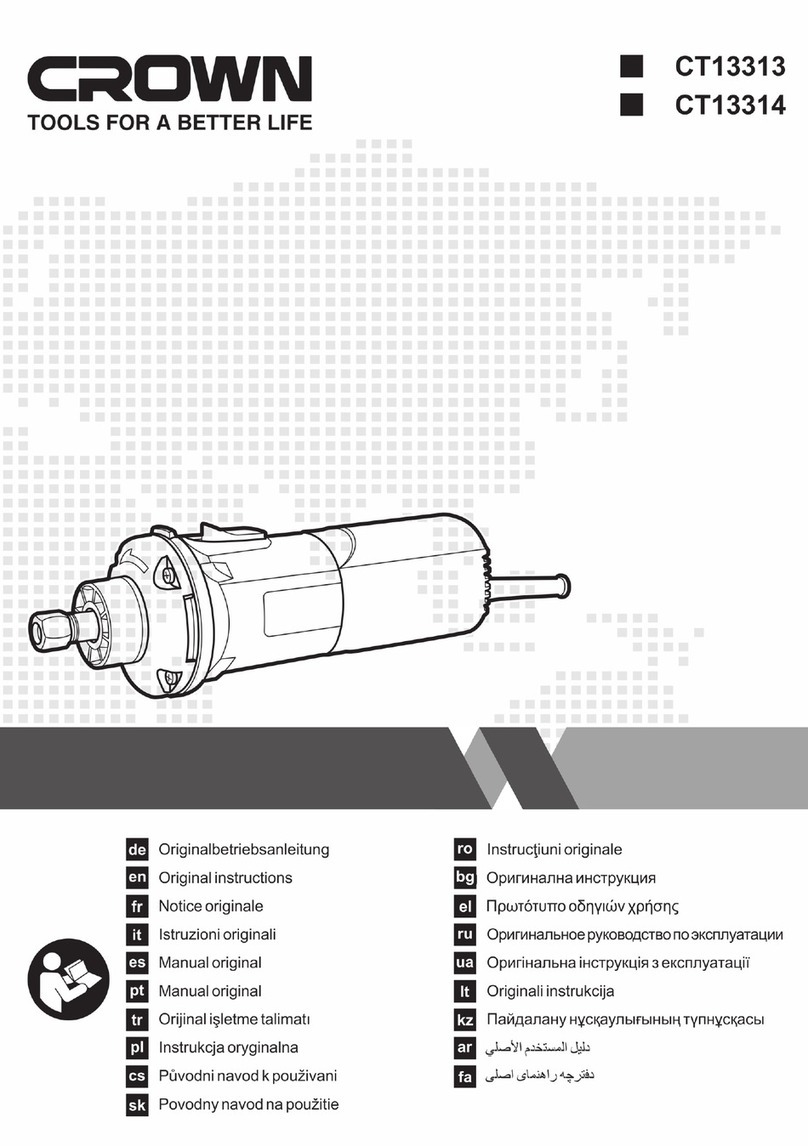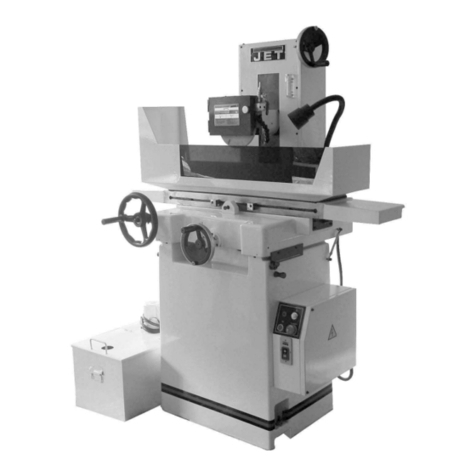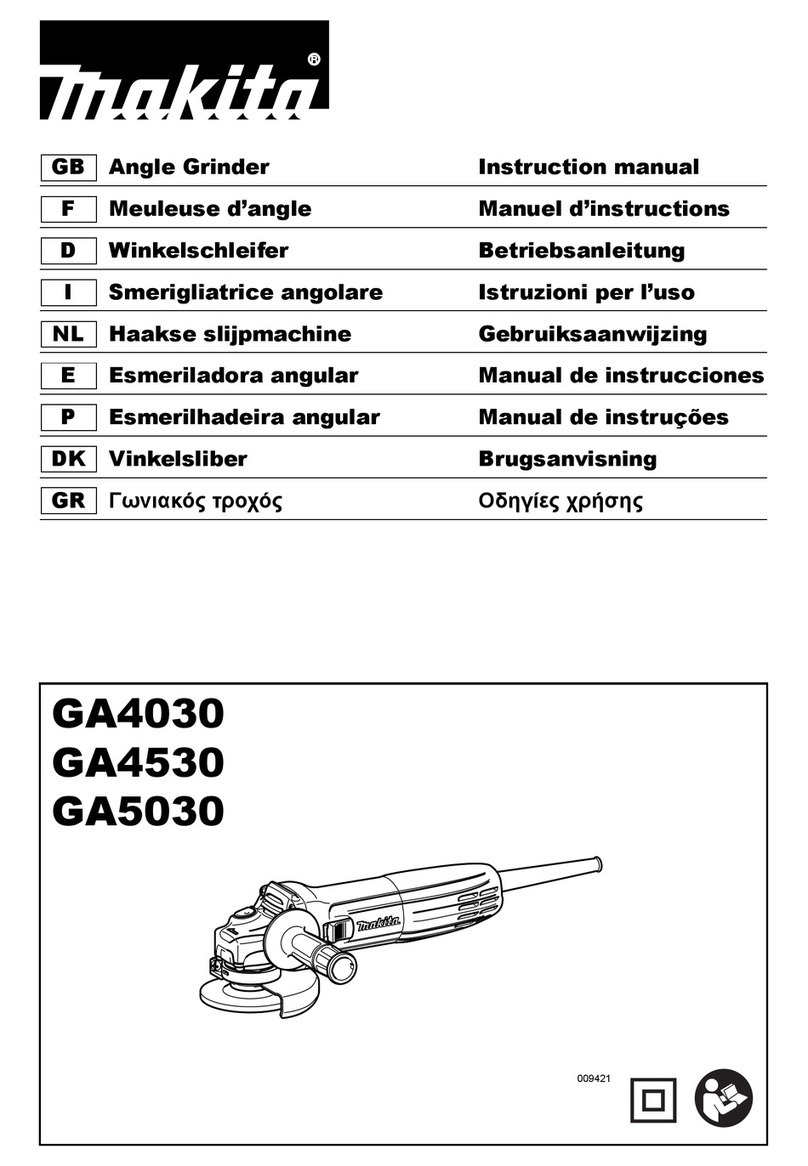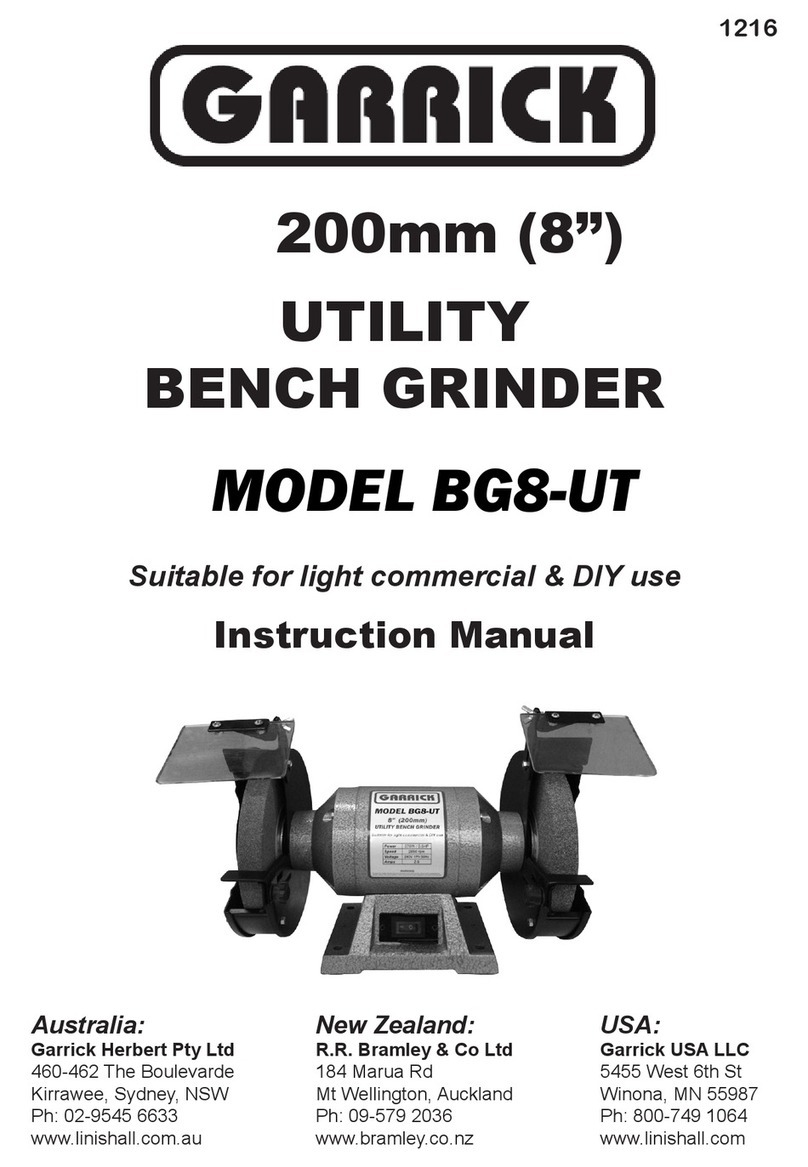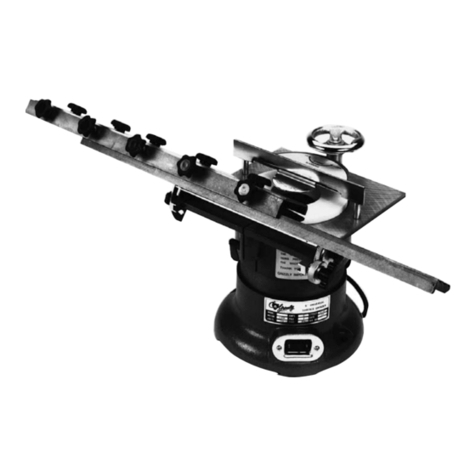
5
ENGLISH
ADDITIONAL SPECIFIC SAFETY RULES
Safety Warnings Common for Grinding
a ) This power tool is intended to function as a grinder.
Read all safety warnings, instructions, illustrations
and specifications provided with this power tool.
Failure to follow all instructions listed below may result in
electric shock, fire and/or seriousinjury.
b ) Operations such as sanding, wire brushing, polishing
and cutting-off are not recommended to be
performed with this power tool. Operations for which
the power tool was not designed may create a hazard and
cause personalinjury.
c ) Do not use accessories which are not specifically
designed and recommended by the tool
manufacturer. Just because the accessory can
be attached to your power tool, it does not assure
safeoperation.
d ) The rated speed of the accessory must be at least
equal to the maximum speed marked on the power
tool. Accessories running faster than their rated speed can
break and flyapart.
e ) The outside diameter and the thickness of your
accessory must be within the capacity rating of
your power tool. Incorrectly sized accessories can not be
adequately guarded orcontrolled.
f ) The arbour size of wheels, flanges, backing pads or
any other accessory must properly fit the spindle of
the power tool. Accessories with arbour holes that do
not match the mounting hardware of the power tool will
run out of balance, vibrate excessively and may cause loss
ofcontrol.
g ) Mandrel mounted wheels or other accessories must
be fully inserted into the collet or chuck. If the mandrel
is insufficiently held and/or the overhang of the wheel is
too long, the mounted wheel may become loose and be
ejected at highvelocity.
h ) Do not use a damaged accessory. Before each use
inspect the accessory such as abrasive wheel for
chips and cracks, backing pad for cracks, tear or
excess wear, wire brush for loose or cracked wires.
If power tool or accessory is dropped, inspect for
damage or install an undamaged accessory. After
inspecting and installing an accessory, position
yourself and bystanders away from the plane of
the rotating accessory and run the power tool at
h ) Keep handles and grasping surfaces dry, clean and
free from oil and grease. Slippery handles and grasping
surfaces do not allow for safe handling and control of the
tool in unexpectedsituations.
5) Service
a ) Have your power tool serviced by a qualified repair
person using only identical replacement parts. This
will ensure that the safety of the power tool ismaintained.
maximum no-load speed for one minute. Damaged
accessories will normally break apart during this testtime.
i ) Wear personal protective equipment. Depending on
application, use face shield, safety goggles or safety
glasses. As appropriate, wear dust mask, hearing
protectors, gloves and workshop apron capable of
stopping small abrasive or workpiece fragments.
The eye protection must be capable of stopping flying
debris generated by various operations. The dust mask or
respirator must be capable of filtrating particles generated
by your operation. Prolonged exposure to high intensity
noise may cause hearingloss.
j ) Keep bystanders a safe distance away from work
area. Anyone entering the work area must wear
personal protective equipment. Fragments of
workpiece or of a broken accessory may fly away and
cause injury beyond immediate area ofoperation.
k ) Hold the power tool by insulated gripping surfaces
only, when performing an operation where the
cutting tool may contact hidden wiring. Contact
with a "live" wire will also make exposed metal parts
of the power tool "live" and could give the operator an
electricshock.
l ) Always hold the tool firmly in your hand(s) during
start up. The reaction torque of the motor, as it
accelerates to full speed, can cause the tool totwist.
m ) Use clamps to support workpiece whenever
practical. Never hold a small workpiece in one hand
and the tool in the other while in use. Clamping a
small workpiece allows you to use your hand(s) to control
the tool. Round material such as dowel rods, pipes or
tubing have a tendency to roll while being cut, and may
cause the bit to bind or jump towardyou.
n ) Never lay the power tool down until the accessory
has come to a complete stop. The spinning accessory
may grab the surface and pull the power tool out of
yourcontrol.
o ) After changing bits or making any adjustments,
make sure the collet nut, chuck or any other
adjustment devices are securely tightened. Loose
adjustment devices can unexpectedly shift, causing
loss of control, loose rotation components will be
violentlythrown.
p ) Do not run the power tool while carrying it at your
side. Accidental contact with the spinning accessory
could snag your clothing, pulling the accessory into
yourbody.
q ) Regularly clean the power tool’s air vents. The
motor’s fan will draw the dust inside the housing and
excessive accumulation of powdered metal may cause
electricalhazards.
r ) Do not operate the power tool near flammable
materials. Sparks could ignite thesematerials.
s ) Do not use accessories that require liquid coolants.
Using water or other liquid coolants may result in
electrocution orshock.
